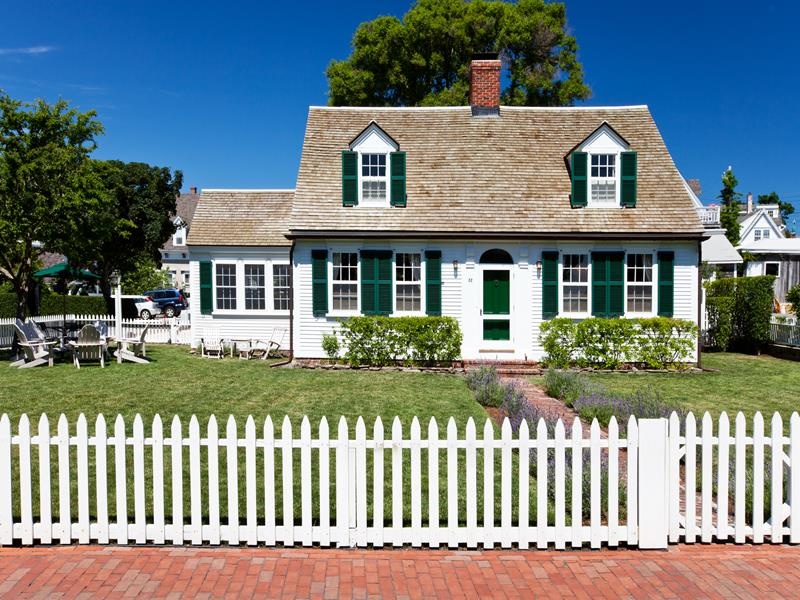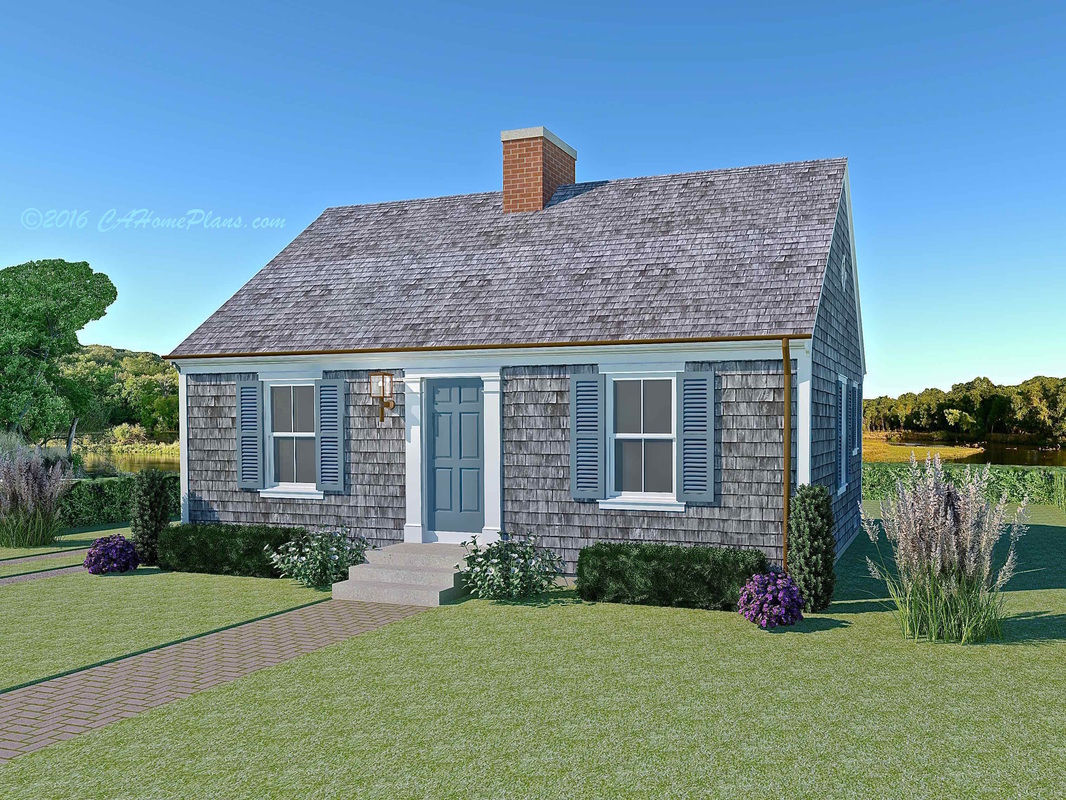Table Of Content

A typical home has two to three bedrooms and a big central fireplace to gather around with family, friends, and guests. The upper half-story can be used as bonus space, storage space, or an extra bedroom. The interior color palette of a traditional Cape Cod home mirrors the exterior environment, often using pastel colors to mimic the sky, grass, water, and sun to add warmth and charm to the interior.
Modular vs Manufactured Homes (Differences, Pros & Cons)
Colonials are known for their distinct room divisions and center-hall stairways. The half-cape style homes feature a corner front door with two multi-paned windows on the other side. The half-cape began as a starter home and over time, the settlers kept adding more rooms to it to accommodate their growing families. Unlike today's modern Cape Cod house plans, window dormers were not an original element of the home. They were later added to gain space, light, and ventilation/air circulation for optimum comfort of the home's expanded second floor. One of the most recognized and admired home styles in today's housing market, the Cape Cod design has steadily adapted to the needs of the modern family.
Cons of Cape Cod-style architecture

Named after the Massachusetts coastal region where it is the signature style, Cape Cod houses are ubiquitous in New England and can be found across the United States. For a Cape Cod with an attic converted to living space, the attic runs the risk of not being well insulated, making the home more susceptible to ice dams, which can cause interior leaking or mold. Traditional Cape Cod homes may also have outdated kitchens, uneven floors, unfinished basements, or attics not suitable for living space. With modest square footage that typically ranges from 1,200 to 1,800 square feet, the Cape Cod is smaller than most homes built today, which average around 2,300 square feet. As Americans migrated from east to west, the Cape Cod design and construction moved with them. This is why Cape Cod houses are more often found in colder, snowier climates throughout New England in cities like Manchester, NH, Boston, MA, Cranston, RI, and Stamford, CT.
Where can you typically find Cape Cod style houses?
The charming yet simple homes are so closely tied into our American vision of home—and for good reason. Cape Cods are a manageable size, efficient to heat, and conducive to additions. The reasons behind their popularity haven't changed since their humble origins in the 17th century, where they were born in—you guessed it—Cape Cod, Massachusetts.
What Is Cape Cod Architecture?
Twentieth century Cape Cod houses share many features with their colonial ancestors, but there are key differences. A modern-day Cape will usually have finished rooms on the second story, with large dormers to expand the living space. With the addition of central heating, the chimney of a 20th century Cape Cod is often more conveniently placed at the side of the house instead of the center. The shutters on modern Cape Cod houses are strictly decorative (they can't be closed during a storm), and the double-hung or casement windows are often single-paned, perhaps with faux grills.
Materials Used in Cape Cod Architecture
This time around, Cape Cod houses were larger; the second story was typically larger, with additional bedrooms and dormer windows projecting out of the roof. There was often more ornamentation on the exterior, like more ornate molding with trim around the front door, windows, and along the eaves under the roof. These additions help give the otherwise simple homes their irresistible charm.
Cape man learns he doesn't own tank fueling heating, cooking of new home - WCVB Boston
Cape man learns he doesn't own tank fueling heating, cooking of new home.
Posted: Thu, 21 Mar 2024 07:00:00 GMT [source]
If you’d like some help finding the perfect architectural style to fit your needs, please contact us. This is different from, say, a Modern Ranch style home which has an asymmetrical U or L layout with large sliding patio doors. Neutral colors such as white, gray or light brown are popular color schemes and blue shades are widely used for Capes in coastal areas.
Many designers use the Cape Cod as a starting point, embellishing the style with features from other times and places. The most obvious difference between today's Cape Cod style and an equivalent true colonial home is the addition of the dormer. Unlike the American Foursquare or other Colonial Revival house styles with one centered dormer on the roof, a Cape Cod style will often have two or more dormers. On the colonial East Coast, Cape Cod homes were heated by a single fireplace with a chimney rising from the center of the house. The Samuel Landon house shown here was built in 1750 in Southold, New York on Long Island, a boat-ride from Cape Cod. Cape Cod house plans for 1950s America was a marketing scheme for a booming housing market.
On one side is one window, and on the other is two — it's quite literally the equivalent of adding another window onto the half Cape. These homes are certainly more modest, but no less special — and they're definitely more popular than a beachside mansion. Whether you're thinking of buying one of these beauties or just toying with the idea of a late summer rental, there's plenty to learn about the classic Cape style home. Don’t be discouraged if the basement could not be your party place for this house as the other beautiful features of this style will definitely leave you feeling charmed. Although Capes are increasingly the victims of suburban “scrape jobs,” bulldozed to free up their lots for maximal McMansions, many contractors still build them.
One of the most noticeable features of a Cape is its steep roof with side gables and minimal overhang. Cape Cod homes were perfect and quickly became a popular home style in America’s first large-scale housing developments built in the 1950s and 1960s. The shutters adorning the windows were a necessary element to the home's design to withstand the wind and weather elements; however, today, they offer more of an aesthetically pleasing aspect. Given the fact that they're called Cape Cods, it's no secret that these homes have a breezy, beachy feel through and through. Even if one is further inland in a suburban town, you can expect a nautical vibe with touches of traditional, rustic elements peppered throughout the interior and exterior. A three-quarter Cape also ditches the symmetry a bit, with the front door off center and lined up with the staple chimney.
Additional rooms attached to the side or rear created a design that some people have called "Minimal Traditional," a very sparse mashup of the Cape Cod and Ranch style houses. Inexpensive and mass-produced, these 1,000-square-foot houses filled a need for the rush of soldiers returning from the war. In New York's famous Levittown housing development, factories churned out as many as 30 four-bedroom Cape Cod houses in a single day.
But Cape Cod architecture began centuries before in colonial New England. This photo gallery shows a variety of Cape Cod houses, from simple colonial Cape Cods to modern-day versions. The floorplans are generally rectangular or square with double French doors leading to the patio.
“Cape Cod is a seasonal destination where the summer population increases by at least 5–10 times than that of the year-round population,” McDonald adds. Like many beach towns throughout the northern coast, plenty of the homes are only used 12 weeks out of the year—and even those that are used year-round get the most action in the summer months. “Seasonal homes like many of these are designed for outdoor and beach living. As such, people want houses connected to the outdoors, to porches and decks and to views,” McDonald explains, noting that you’ll often find these indoor-outdoor living spaces in this style of home design. Many 20th century Cape cod homes opt for a different exterior paint color palette than those built earlier.
By the 1830s, they had spread from southern New York to the upper portion of the state, where their popularity continued west into Ohio and Michigan. Today, Cape Cods can be found in most of the continental U.S., as the modern full Cape style had a resurgence during the 20th century. Much later, in the late 1800s and early 1900s, a renewed interest in America's past inspired a variety of Colonial Revival styles. Colonial Revival Cape Cod houses became especially popular during the 1930s and later. The structure of a Cape Cod makes it easy to add to another section of the house or connect to a garage or carriage house without losing the home’s iconic style.
On average, most two-story homes are about 20 feet tall, and that's generally no exception with modern Cape Cod house plans since they will be subject to today's code requirements. Expanded room sizes, improved traffic flow, and the addition of a complete second story offer even more reasons for homeowners to embrace this iconic house plan. Depending on the position of the front doors and multi-pane glass windows on the facade, Cape Cod homes further segregate their design styles into single, three-quarters, and full cape. However, there are a few common design characteristics in each that unite into one strong architectural design style called the ‘Cape Cod Style’.


No comments:
Post a Comment